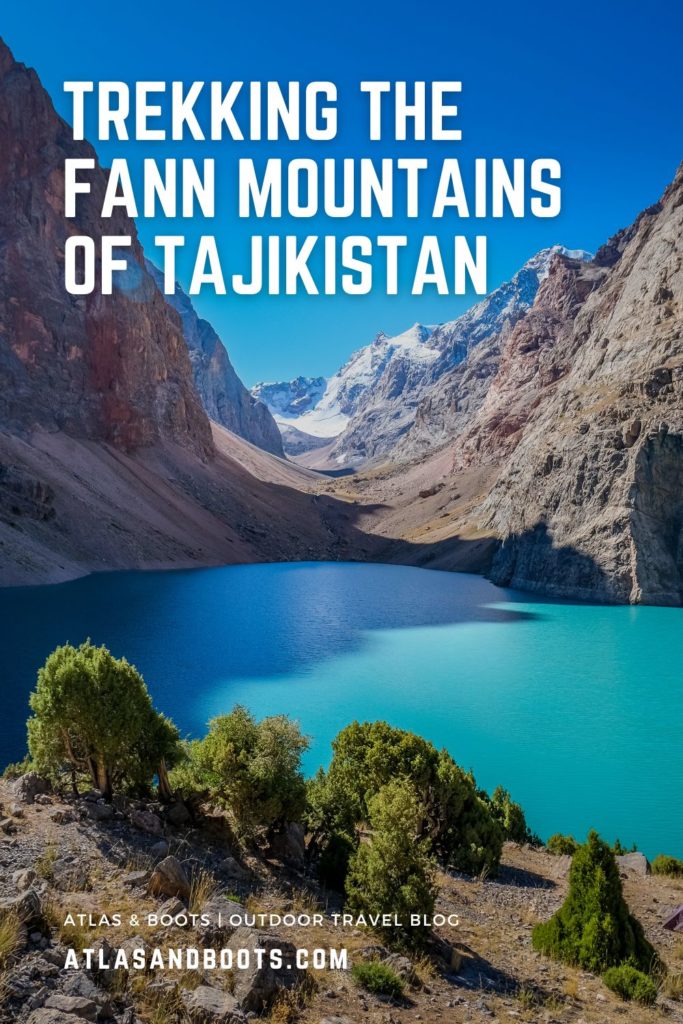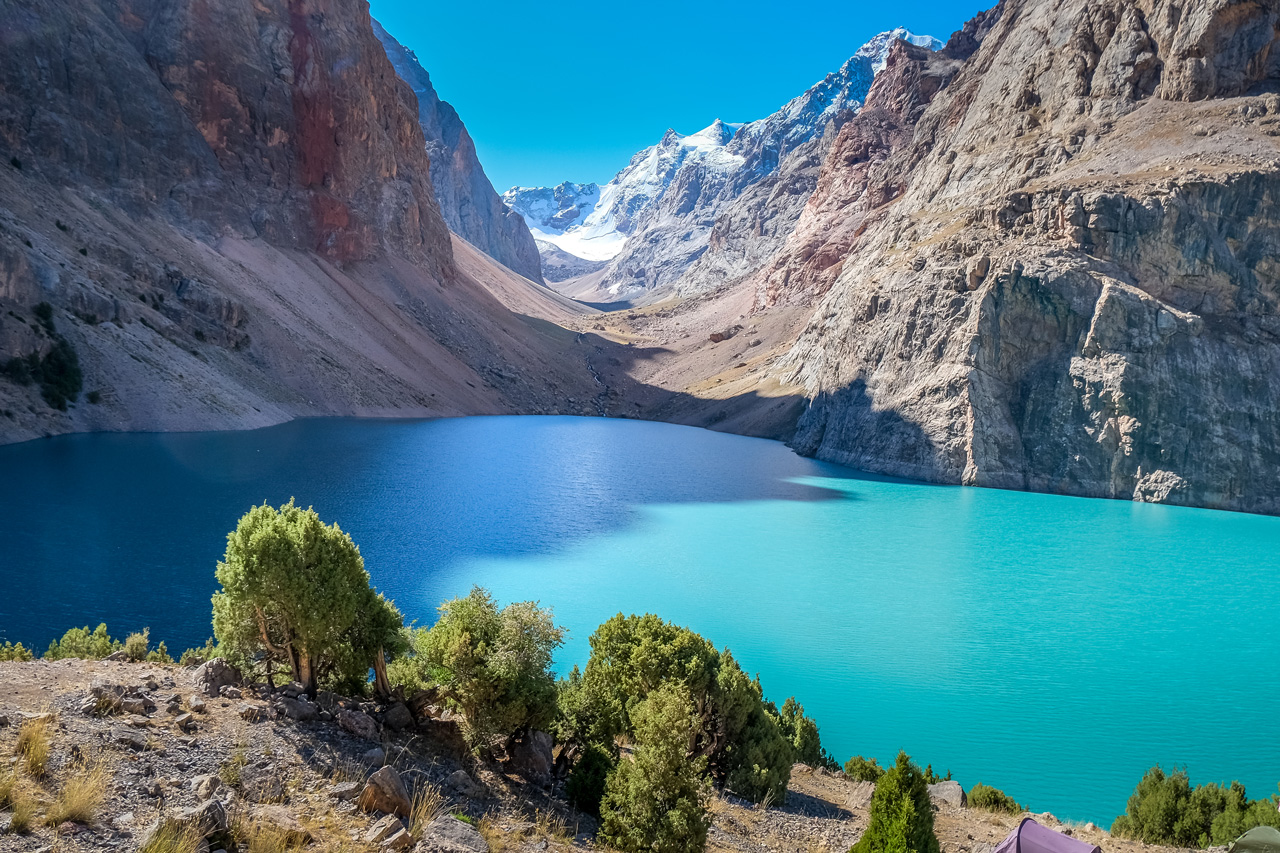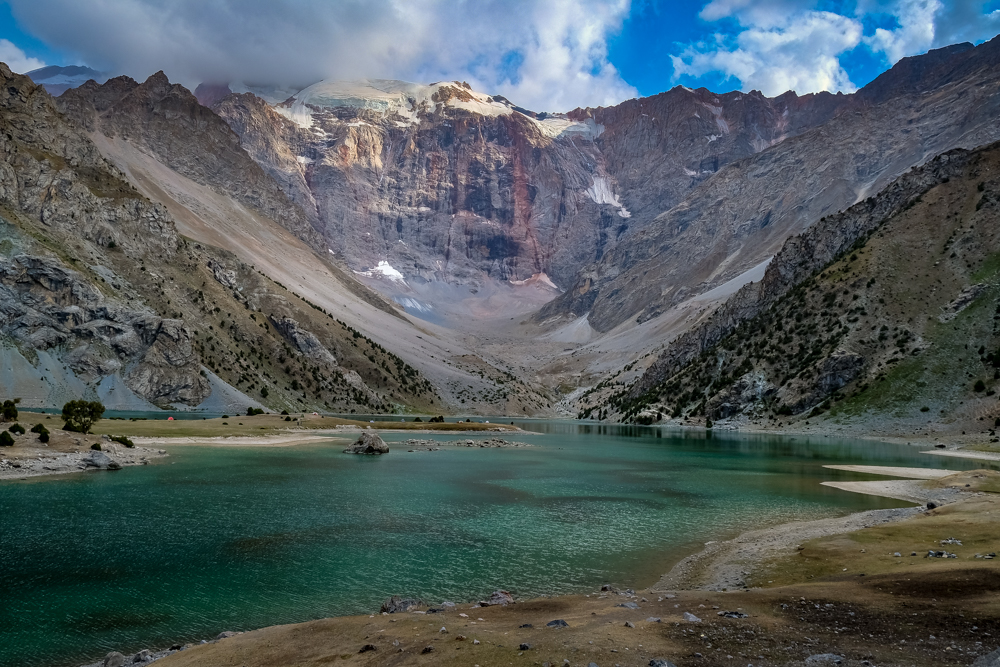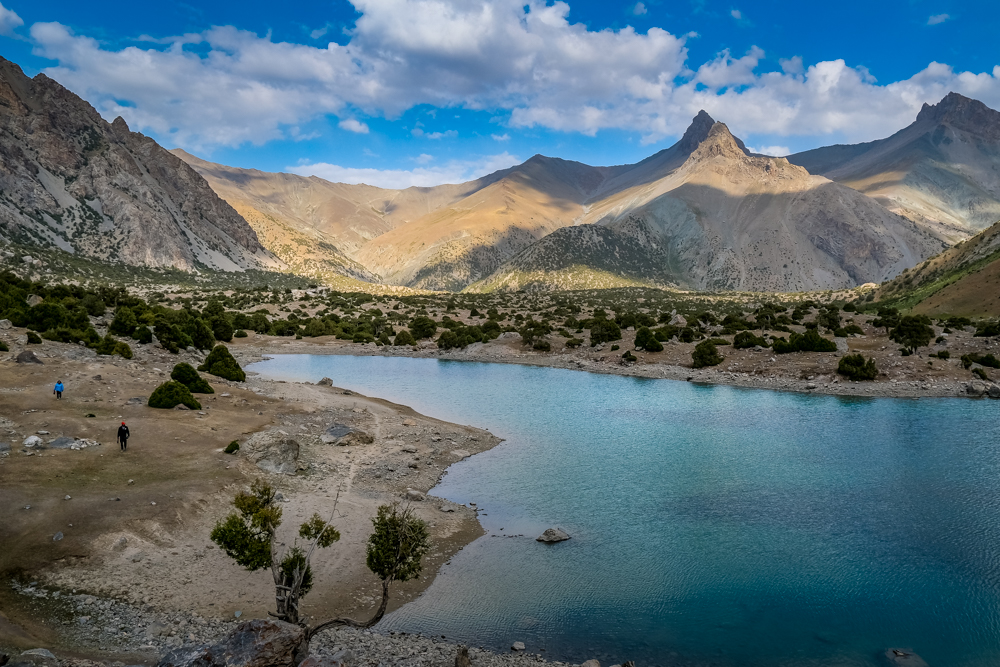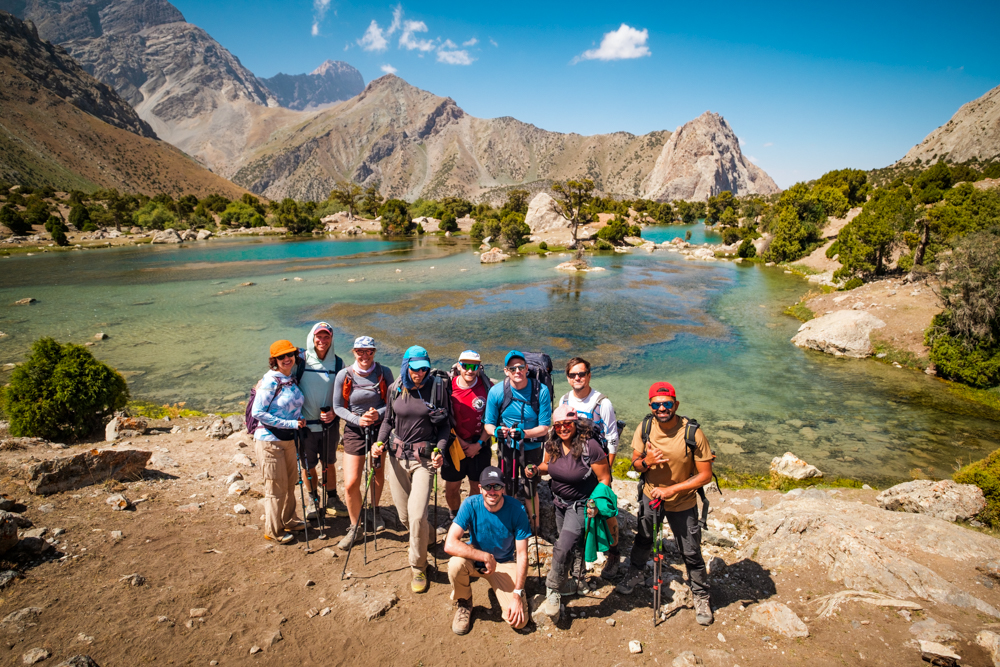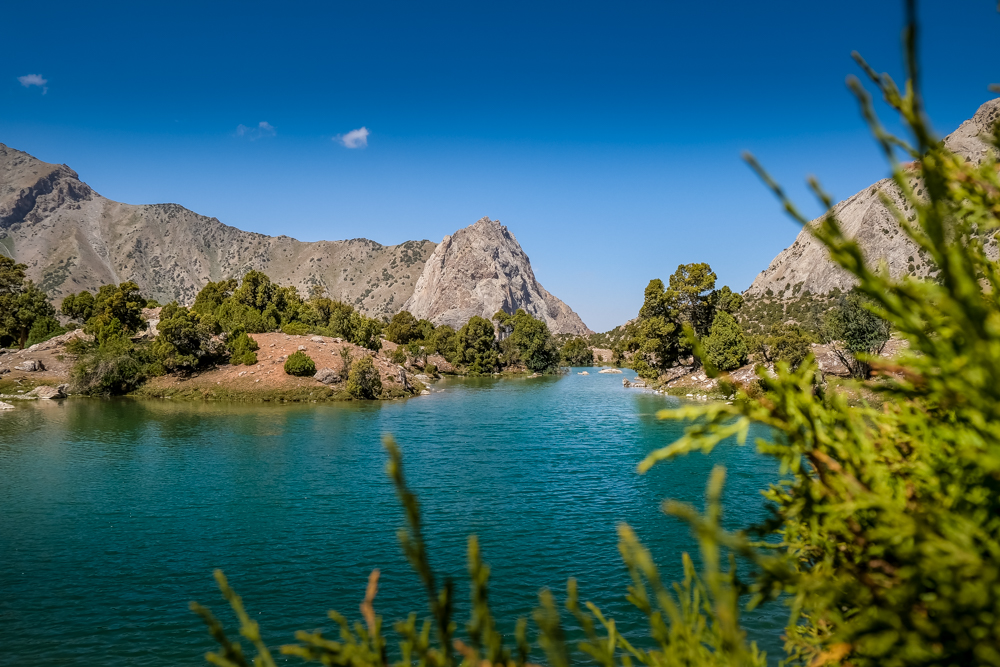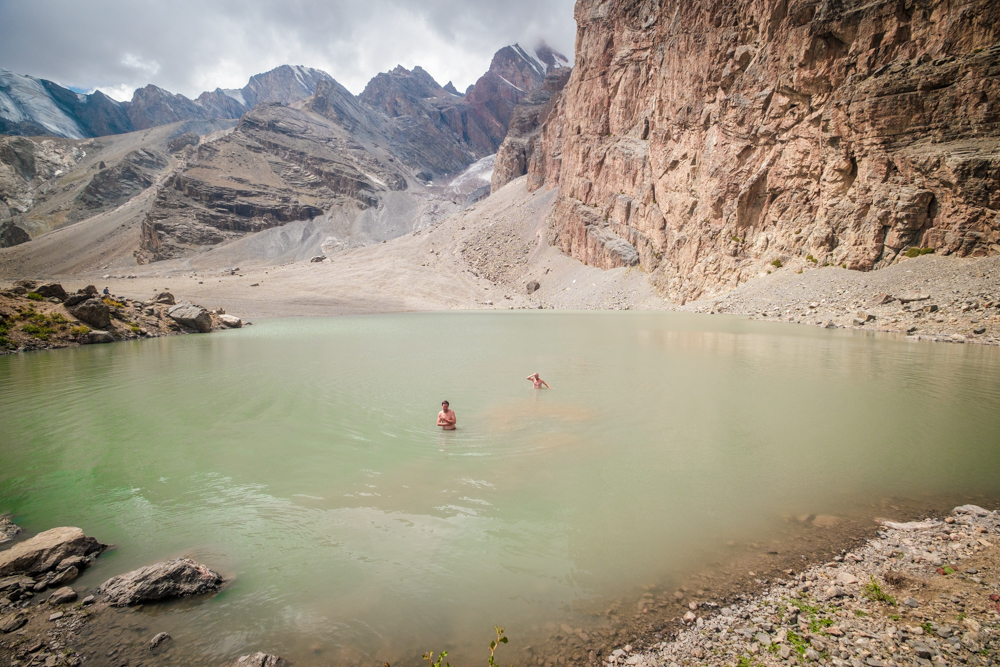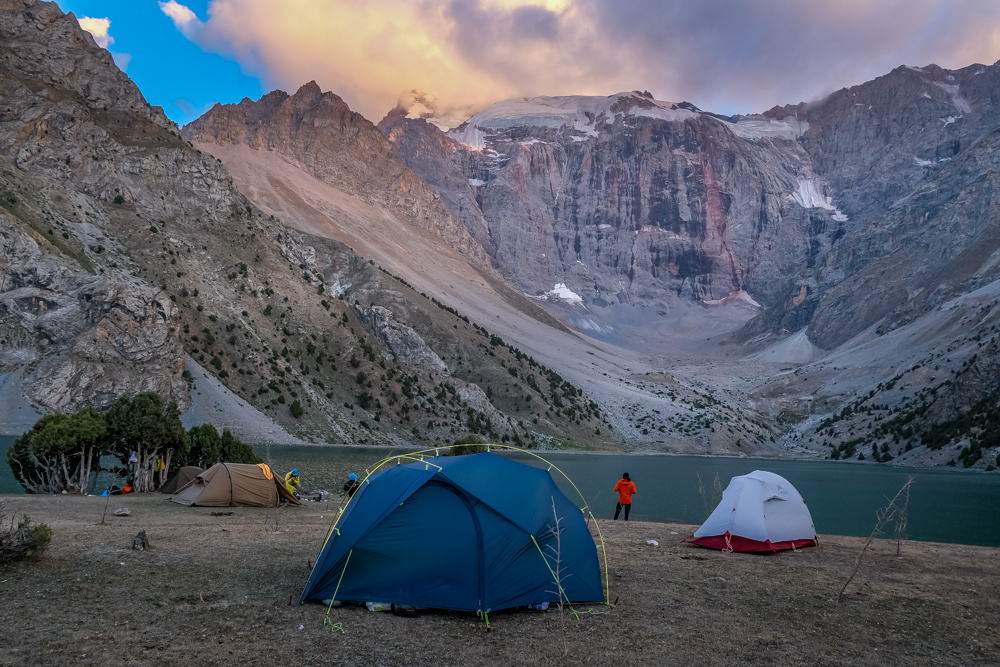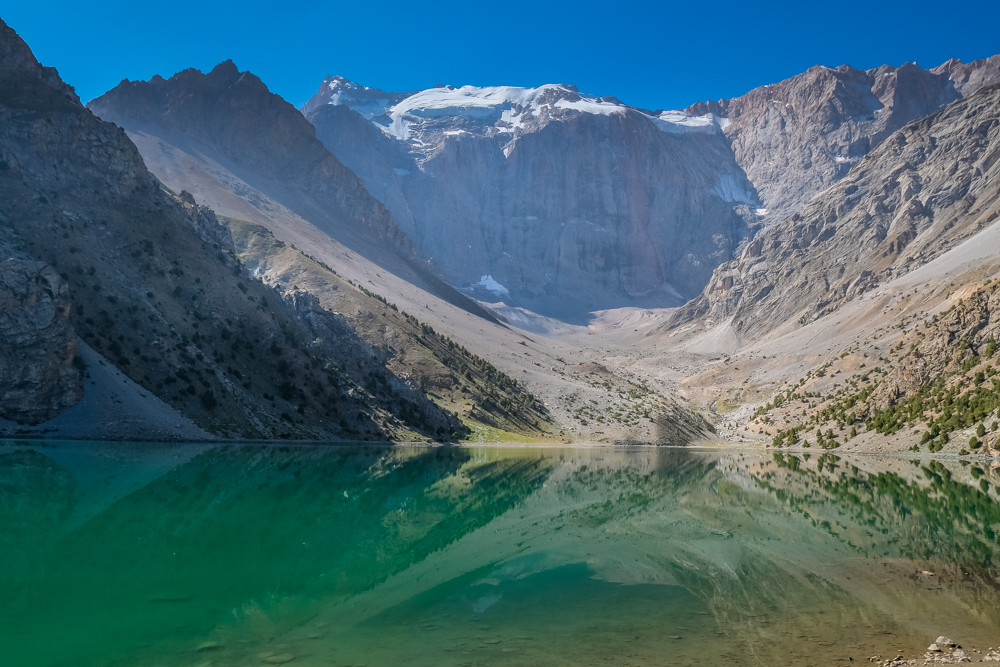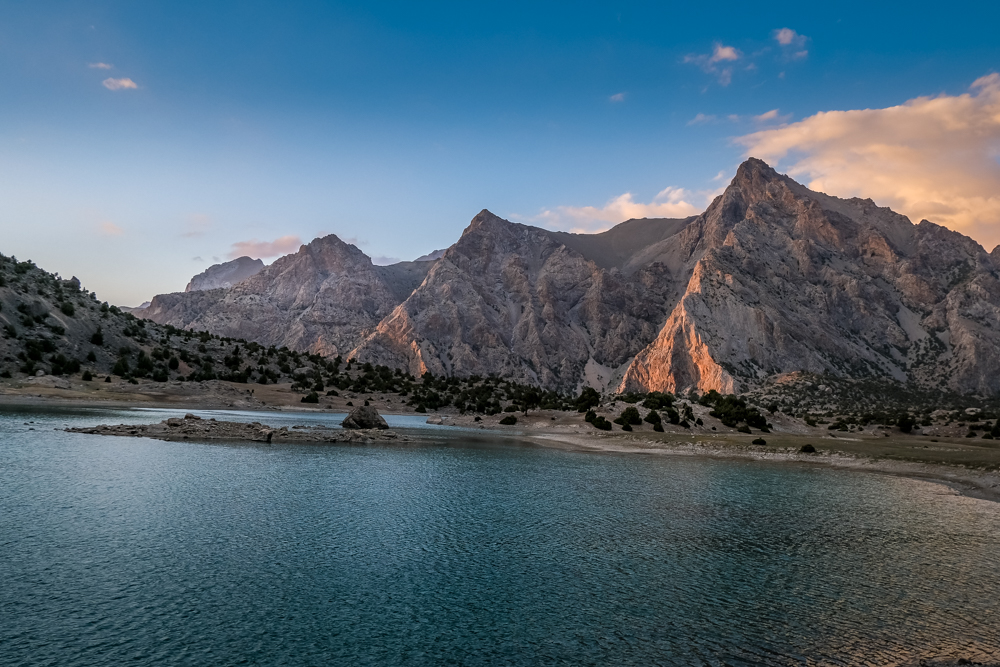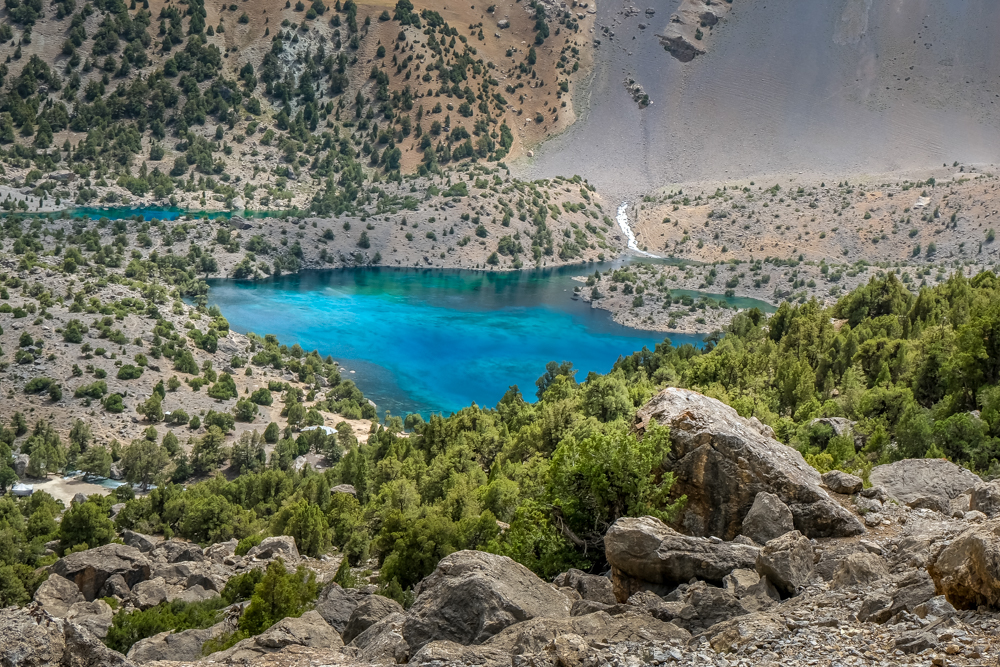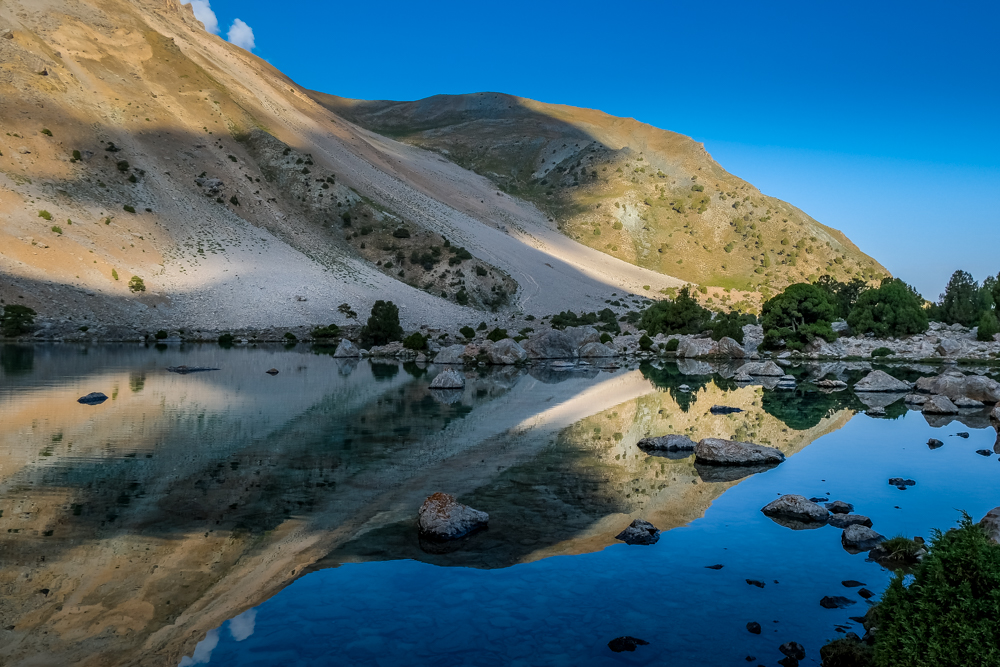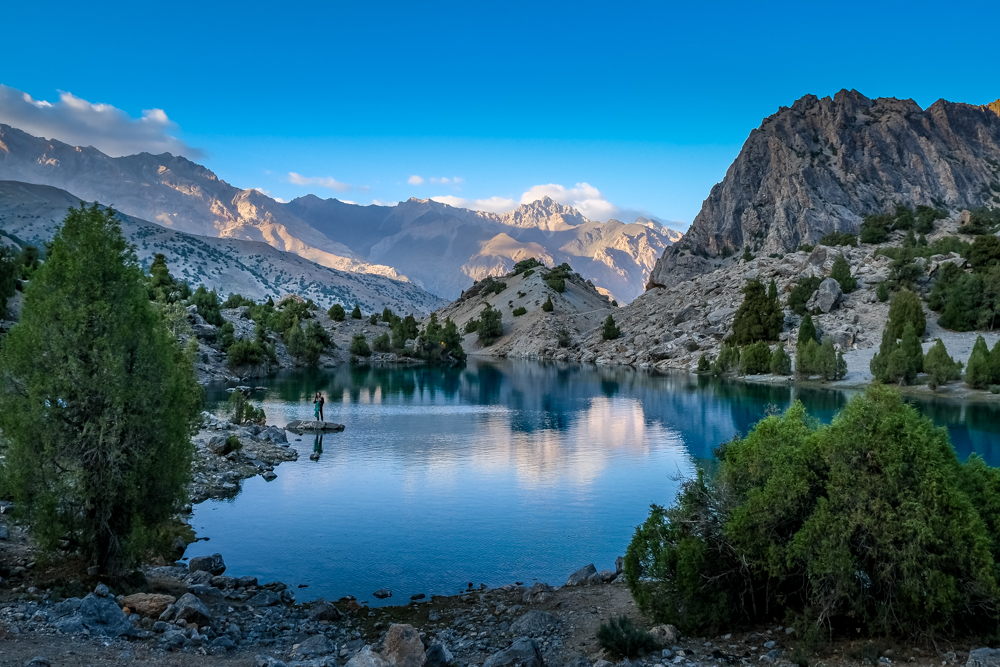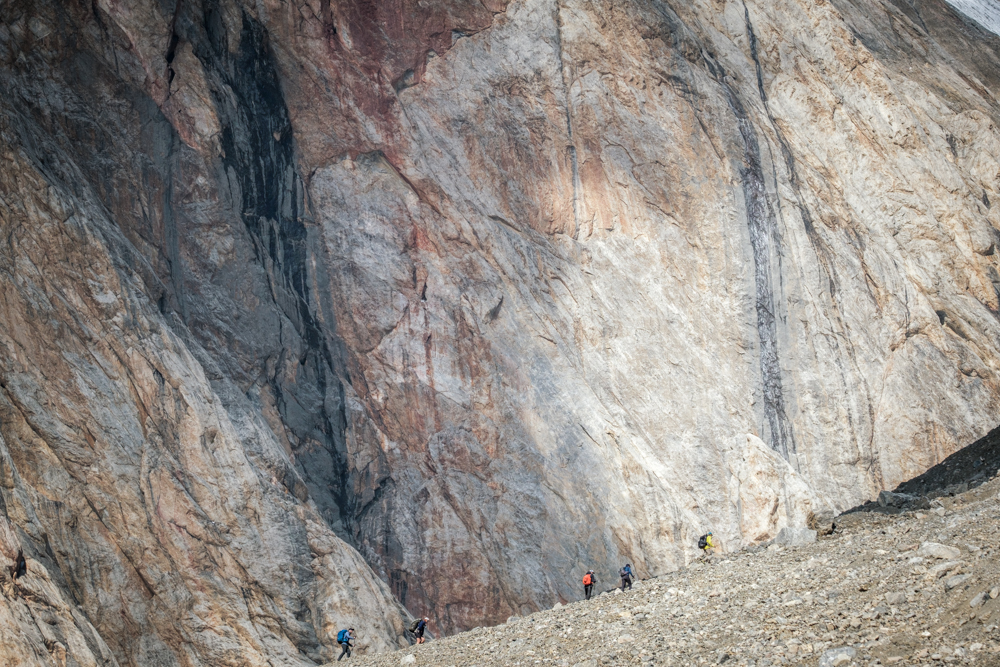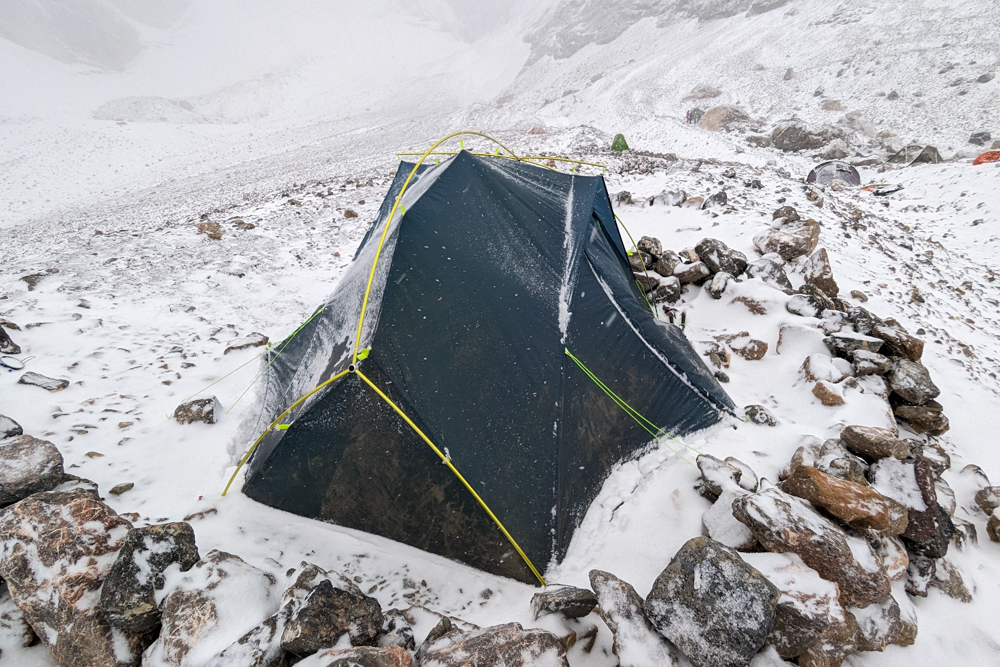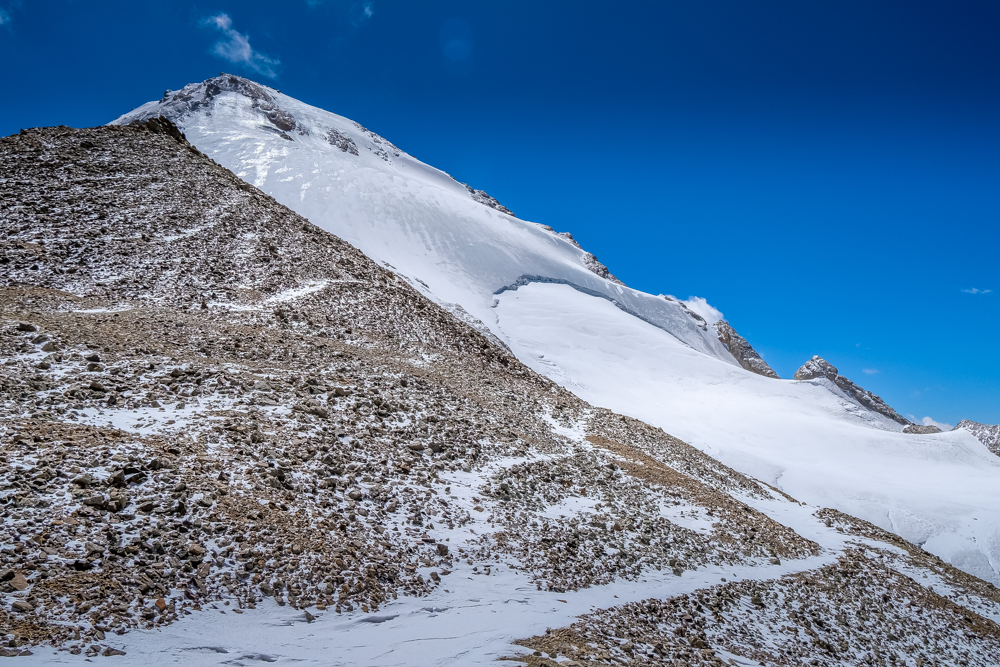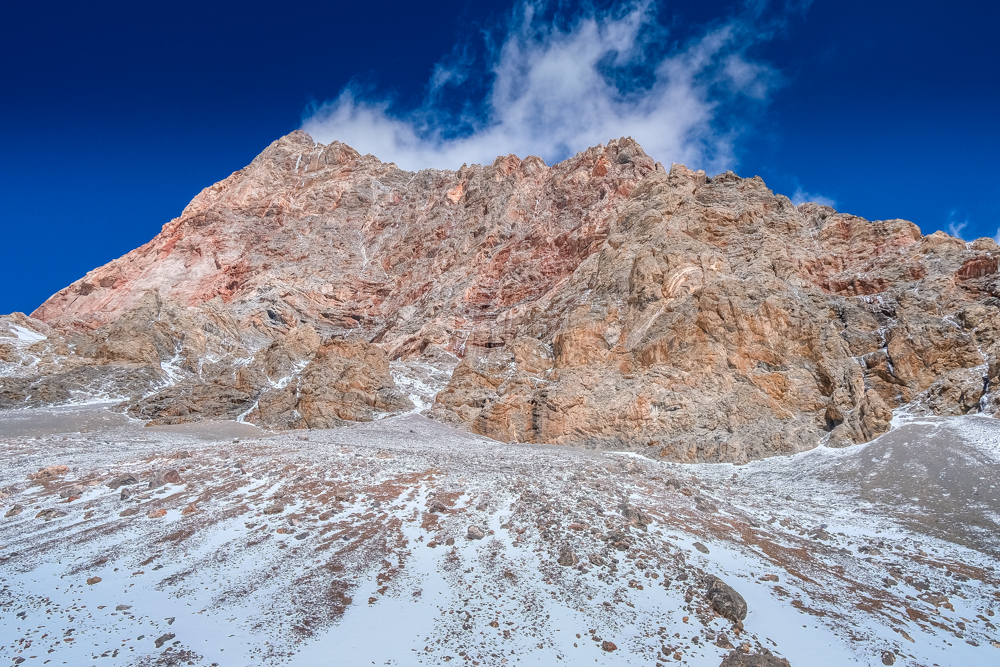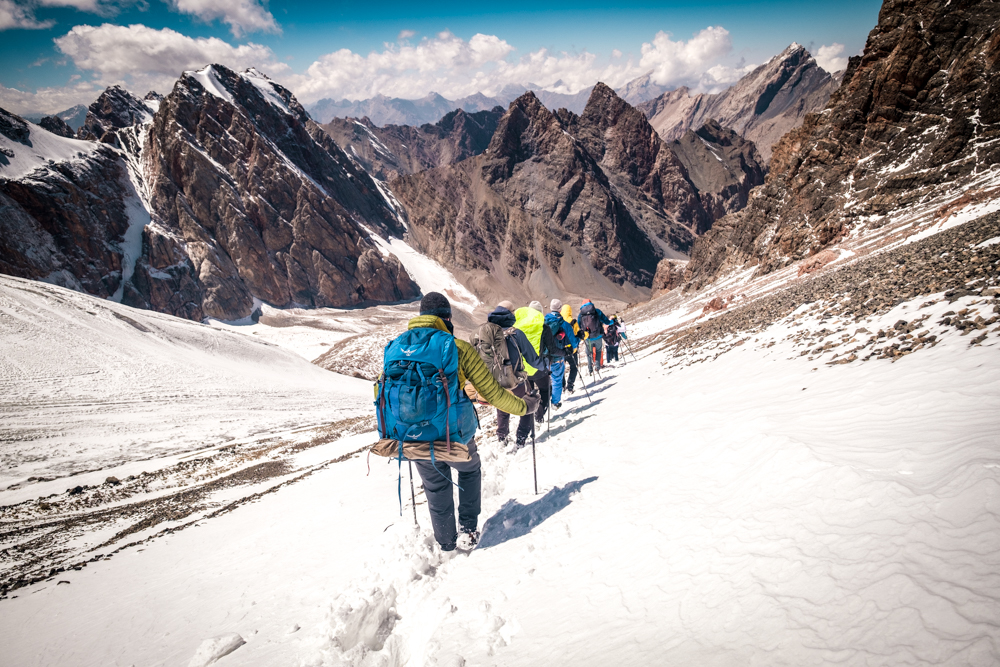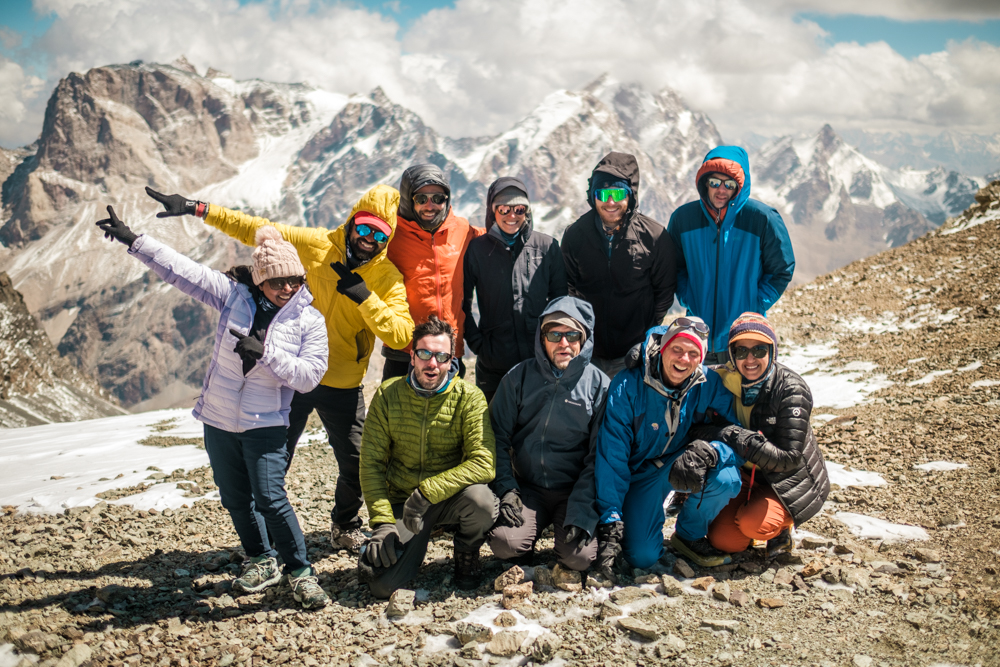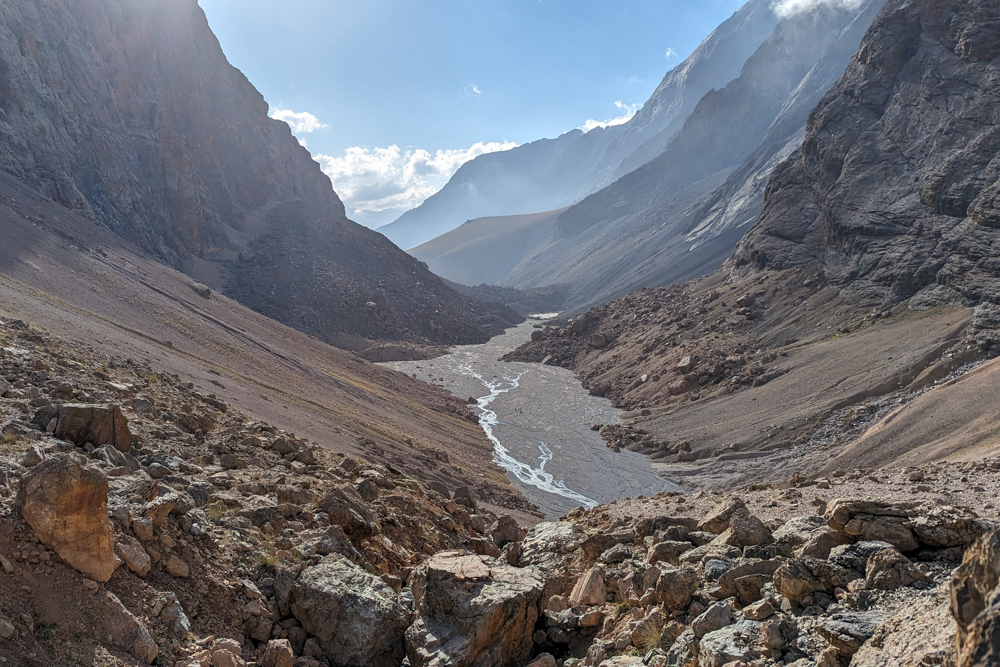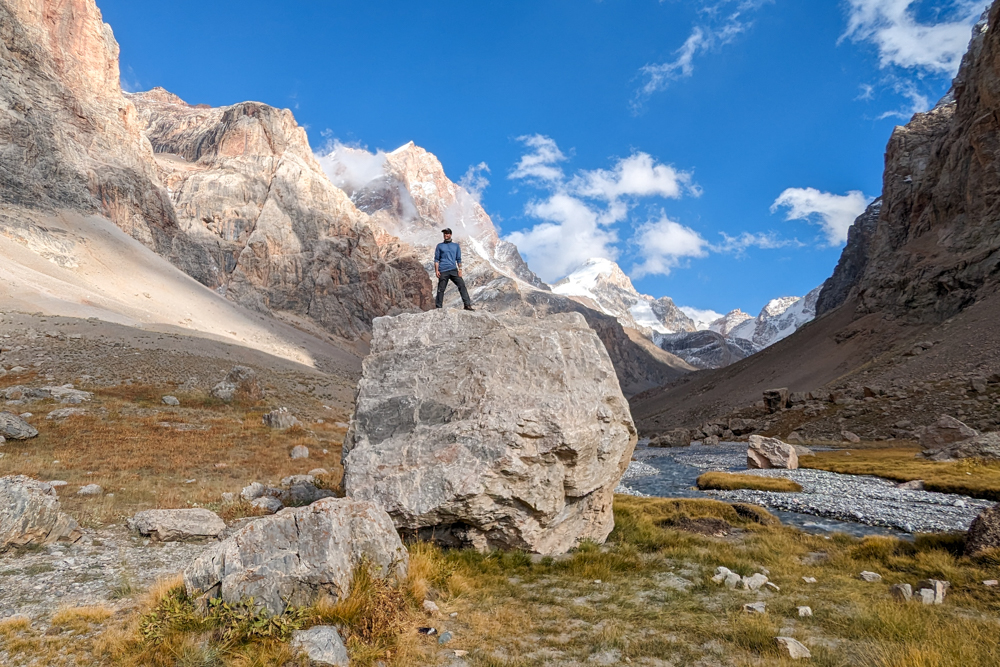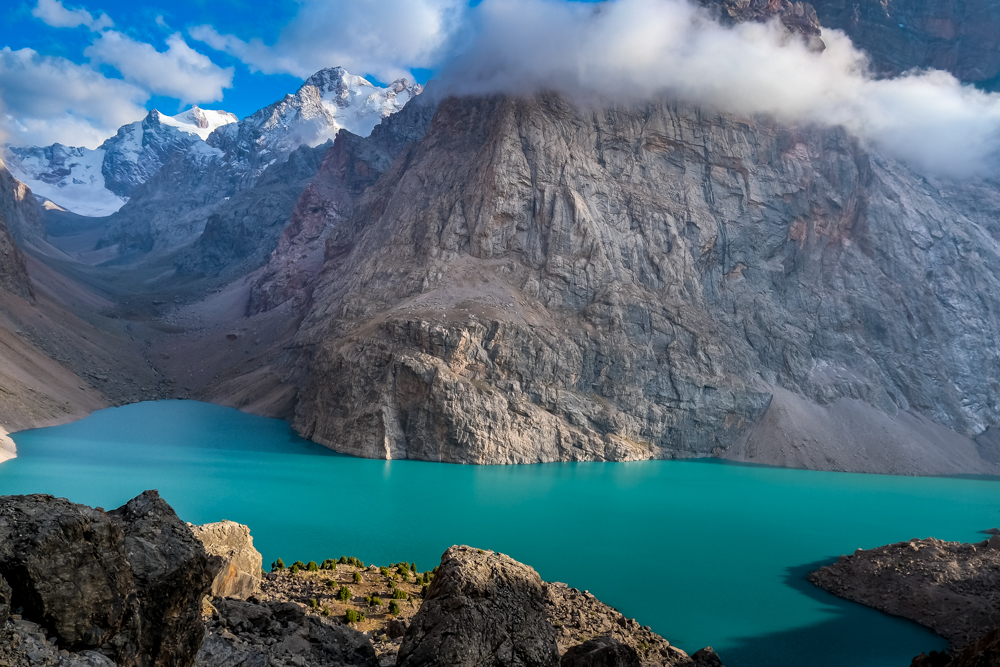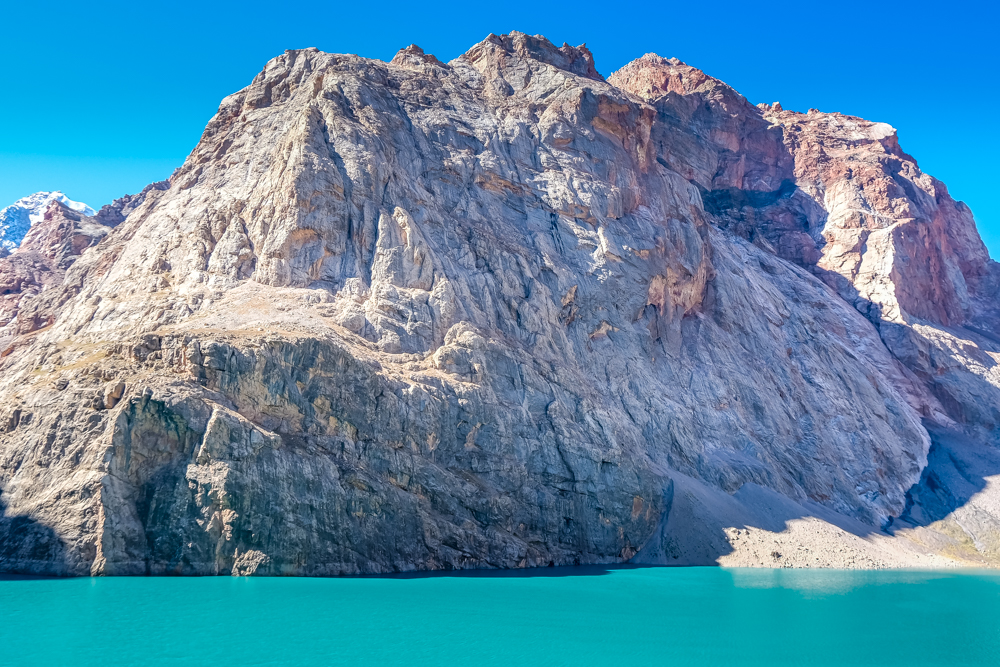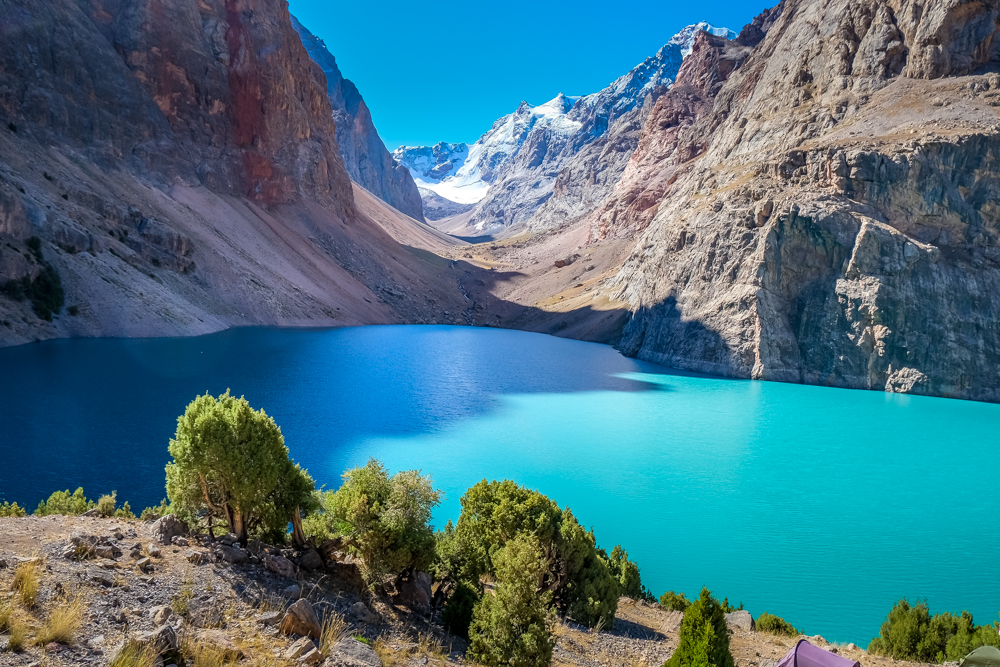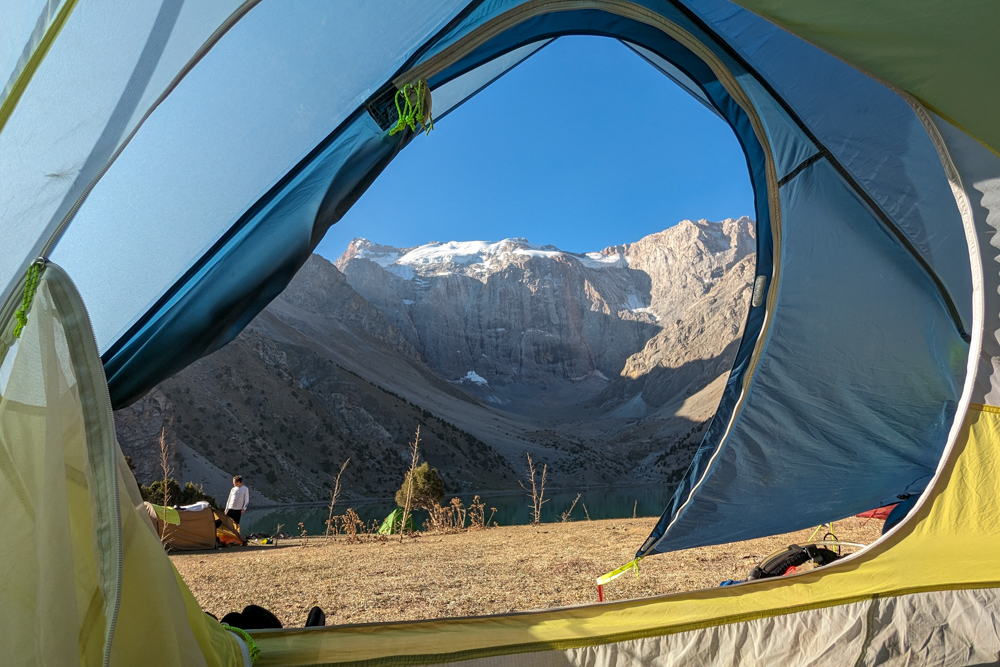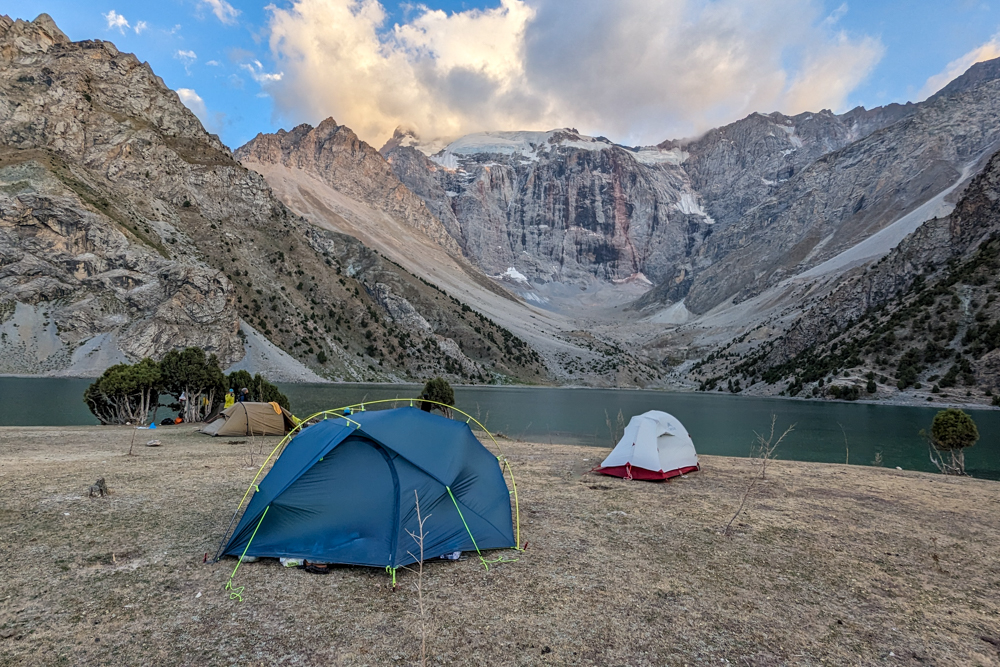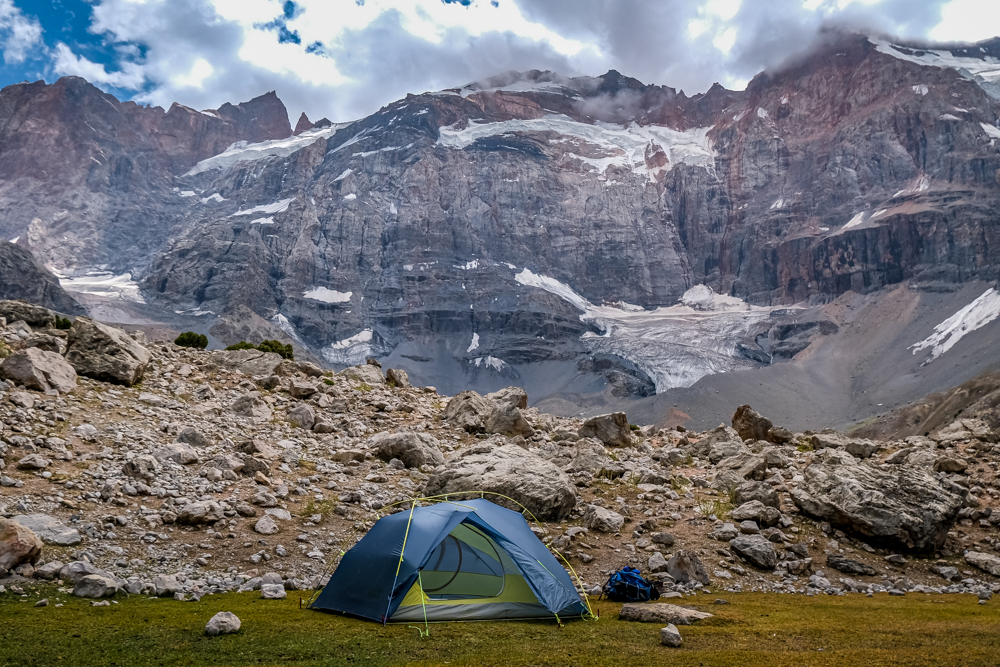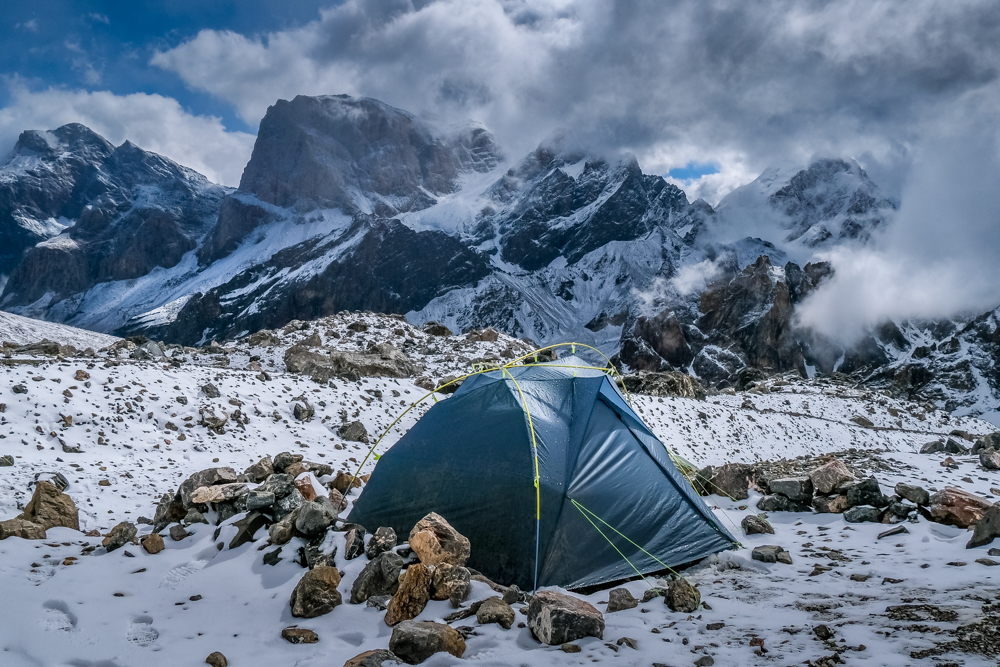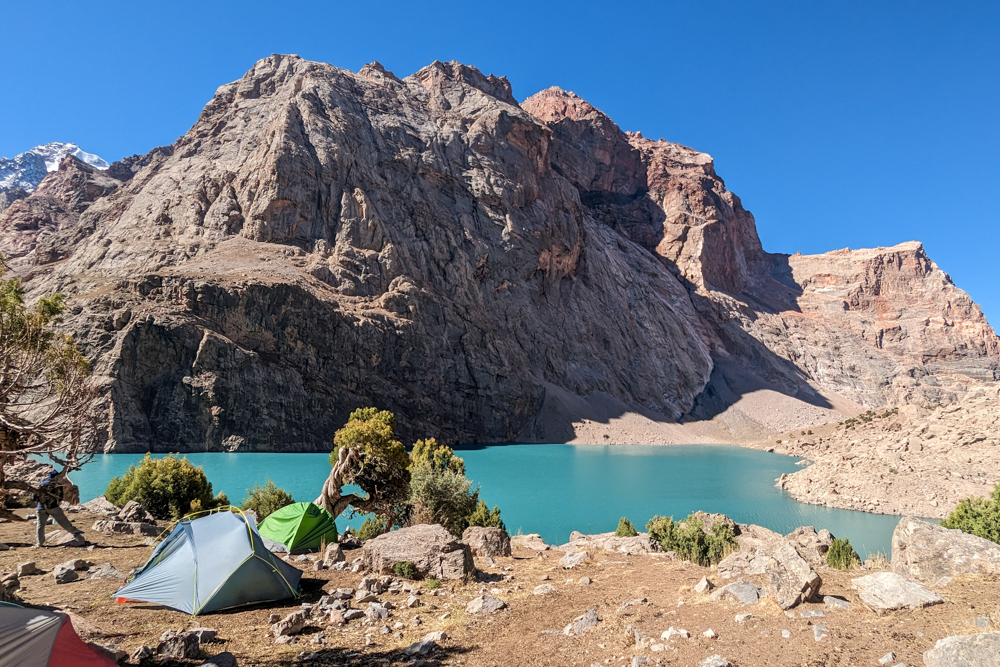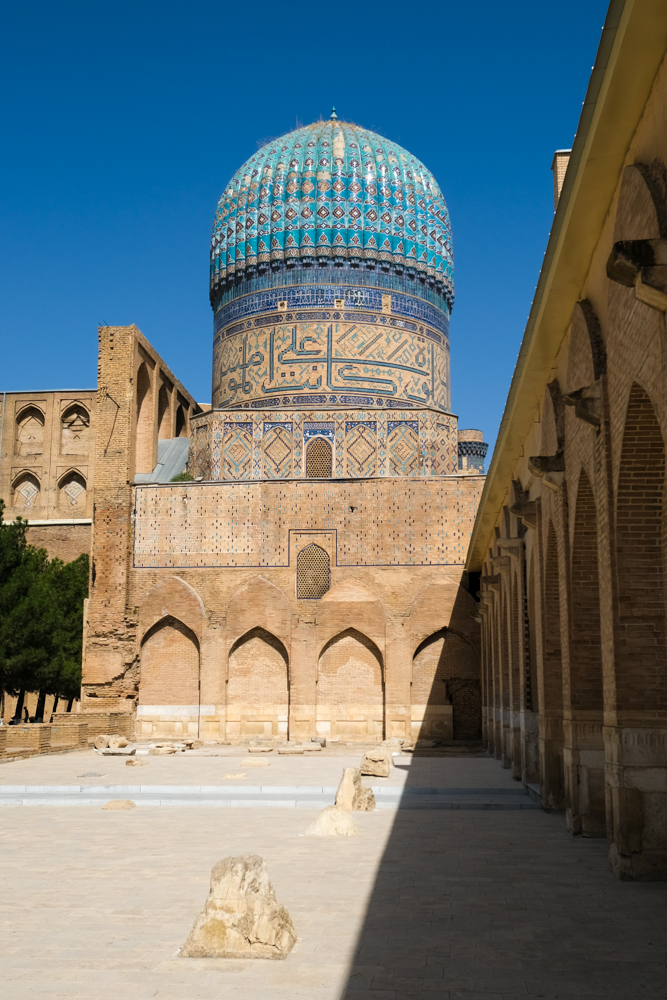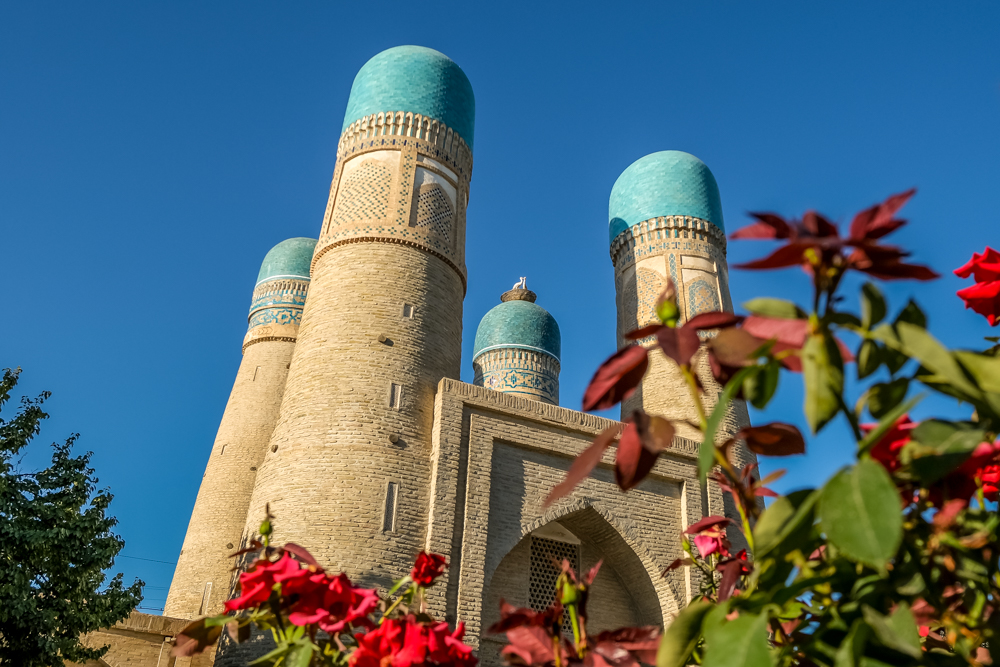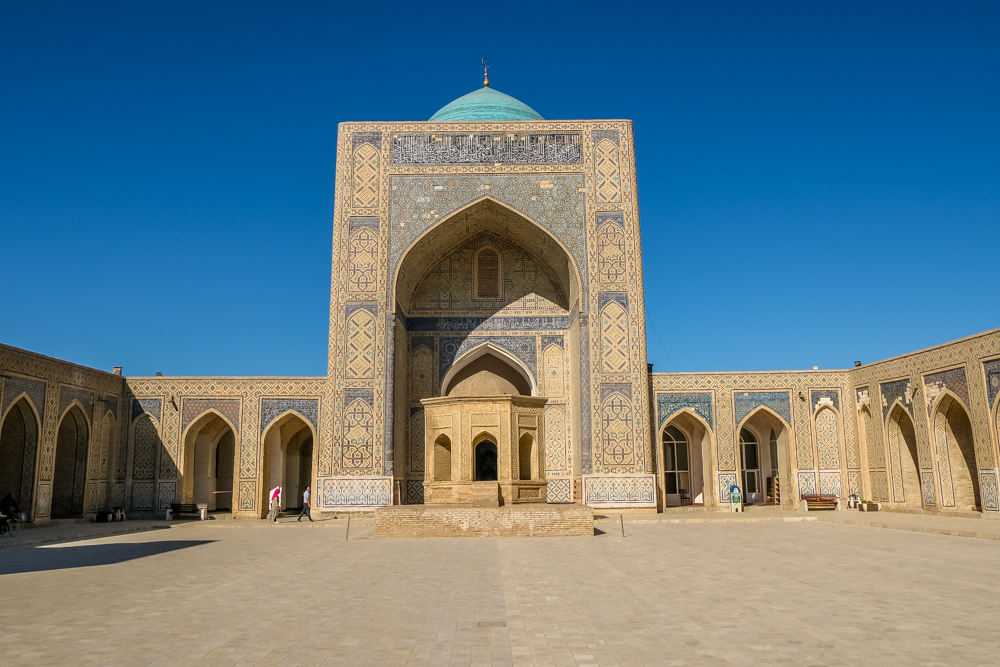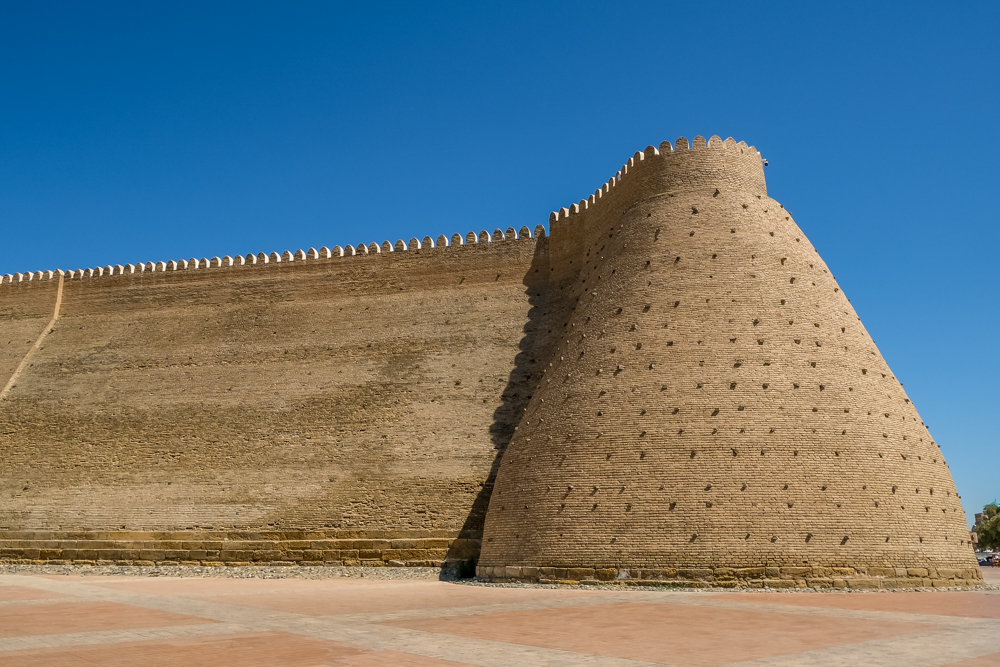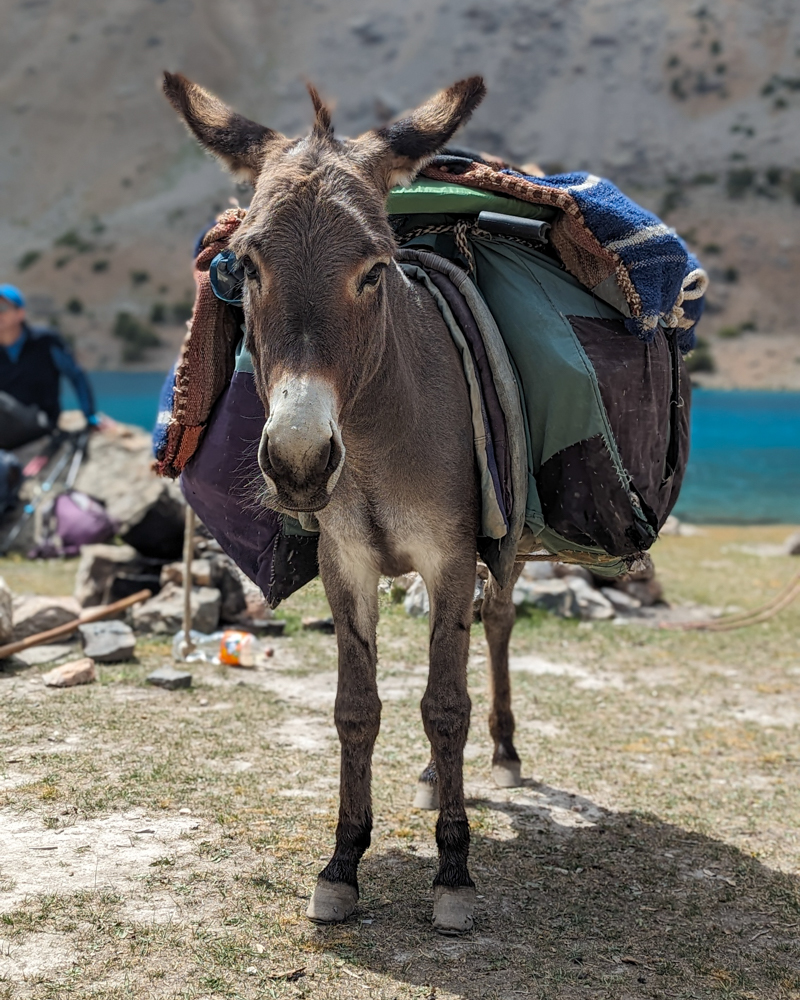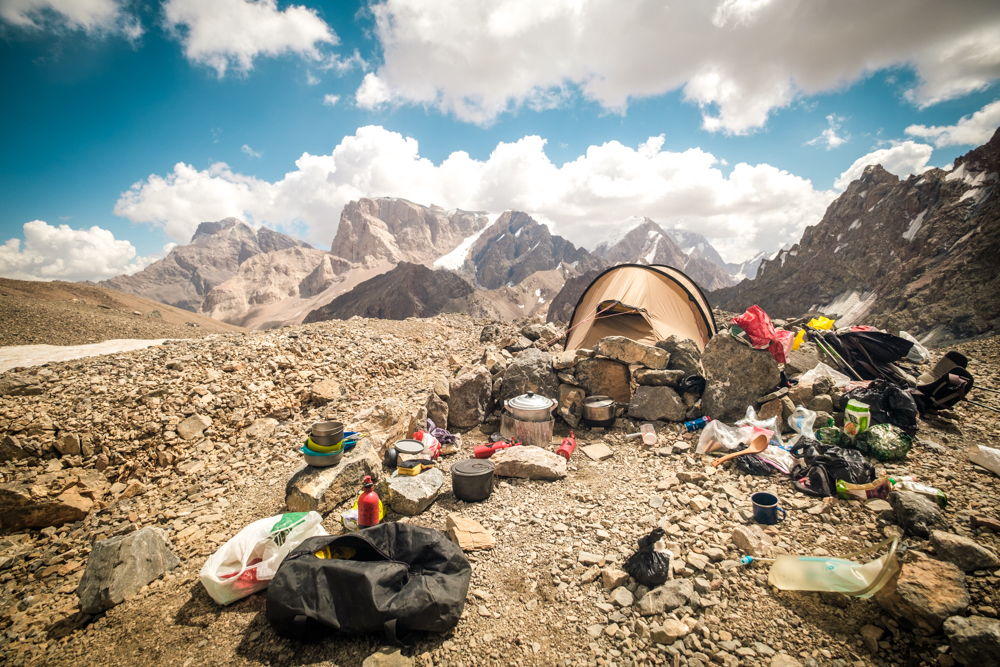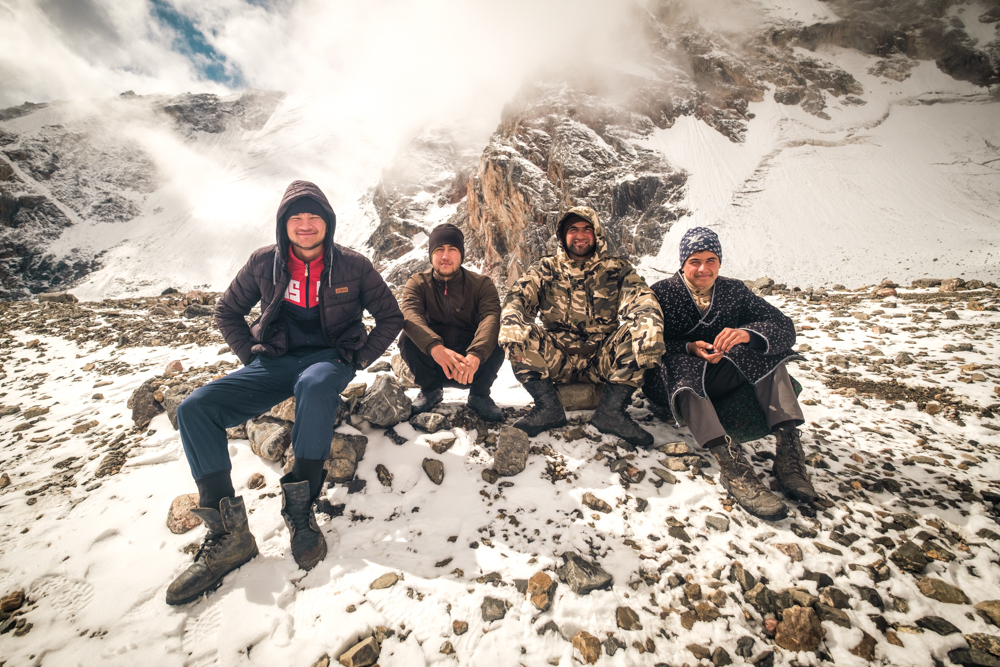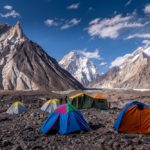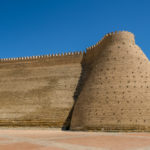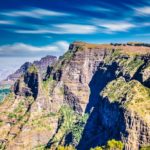Trekking the Fann Mountains of Tajikistan is an adventure through one of Central Asia’s hidden gems. Here’s how to make it happen
Tajikistan is the smallest of the Central Asian republics. Landlocked, misshapen and squished and squeezed by its neighbours, it has remained largely undiscovered by tourists even though it was at the centre of the Silk Road for much of its past.
Following the collapse of the Soviet Union in 1991, the country descended into a devastating five-year civil war. As such, it grappled with poverty and instability throughout the 1990s rendering the country unsafe and off-limits to foreign visitors.
Fast forward nearly three decades and the nascent tourism industry is still struggling to harness the country’s truly unique selling point: over 90% of its land is considered mountainous meaning that the best trekking in Central Asia is found in Tajikistan.
I joined a 15-day expedition with Epic Expeditions and spent nine days trekking the Fann Mountains of Tajikistan, camping beside glittering emerald lakes, crossing thrilling alpine passes and visiting remote mountain communities. On either side of the trek, the tour took in the stunning Silk Road cities of Samarkand and Bukhara in Uzbekistan, making for a genuinely unique itinerary.
Here’s everything you need to know about trekking the Fann Mountains of Tajikistan.
Introducing the Fann Mountains
The Fanns are a sub-range of the Pamir-Alay, a mountain system considered part of the Pamirs. Known locally as the ‘roof of the world’, the Pamirs are at the centre of the so-called Pamir Knot – a confluence of the highest mountain ranges on the Eurasian continent – and rise to over 7,000m. They are also home to the world’s second-highest road, the Pamir Highway, after the Karakoram Highway in Pakistan and China.
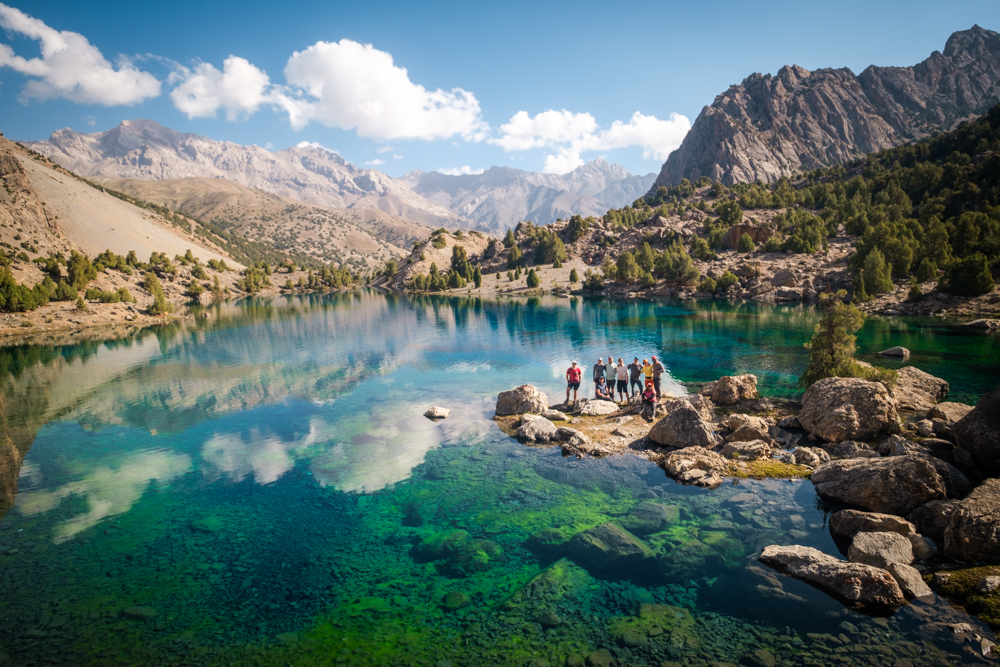
The Fann Mountains, although lower, are no less stunningly scenic. Home to hundreds of peaks, several above 5,000m, the Fanns were the playground for mountaineers behind the Iron Curtain during Soviet times. The highest point is Chimtarga Peak at 5,489m.
The main gateway to the Fanns is Artuch, a trekking and mountaineering base, campsite and lodge located at 2,200m in the heart of the Fanns. The site was founded in 1971 as a base camp for Soviet mountaineering expeditions in the region. Like most visitors to the Fanns, we began our trek at Artuch.
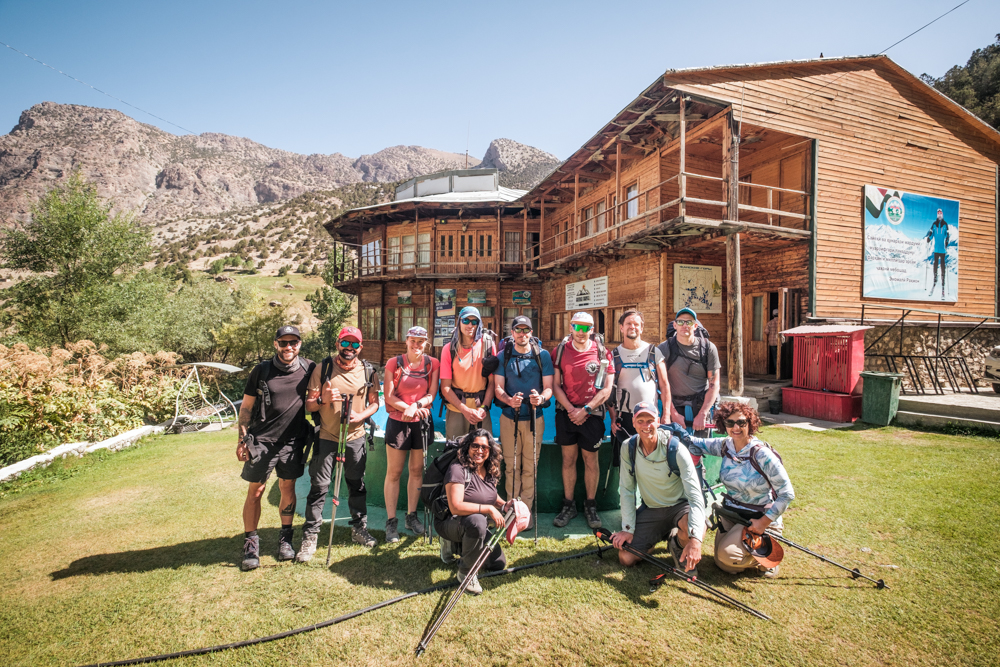
Glacial bathing
Perhaps the Fanns’ biggest draw is its numerous glacial lakes that appear to change colour throughout the day, morphing from glittering turquoise to milky white depending on the conditions overhead.
Our trekking route made the most of these glorious lakes, nestled in the folds of craggy snow-capped peaks. At the lower camps, the grassy banks provided comfy bases for our sleeping mats while the juniper trees dotting the meadows supplied some much-needed shade during the sunny afternoons.
Generally, we used the cooler temperature during the mornings to do the bulk of our daily hiking, reaching our campsites in time for a late lunch. Then we would usually use the afternoons to relax, take a walk around the lakes or dive in for a dip-cum-wash. The lakes are fed by mountain water so were bracing to say the least, but I could just about manage a few minutes in their waters to wash off the day’s sweat and dust. Needless to say, the higher we climbed, the colder they got and the quicker the dips became!
Chimtarga Pass
The high point of the trek comes on day six at Chimtarga Pass, a col at 4,750m connecting the summits of Chimtarga (5,489m) and Energia (5,120m). We took a rest day at Chimtarga High Camp below the pass at 4,115m when strong winds and snow blew in, keeping us inside our tents for most of the day.
The location was in stark contrast to the previous days as the scenery was distinctly more alpine. Gone was the verdant greenery of the meadows, junipers and lakes. Instead, we were in a rocky amphitheatre that soon became carpeted in snow while misty saw-toothed summits towered above.
Fortunately, the weather cleared early the following morning so we had bright skies as we made our way up the snaking trail to Chimtarga Pass. We shared high fives and hugs as we looked down at the concertina folds of slopes we’d climbed. However, getting up the pass wasn’t necessarily the hardest part of the day. We still had a brutally steep and slow descent into the opposing valley.
As the day wore on, the snow gave way to scree which eventually gave way to a boulder-strewn valley floor. It was a long day but by the end of it, we were back at the treeline – and at the most striking lake of the entire trek. Bean-shaped Big Allo Lake didn’t exist until just over a century ago when, in 1912, an earthquake in the region caused an enormous rockslide which damned the Zindon River flowing along the valley. Afterwards, the newly formed cauldron slowly filled to create the turquoise lagoon that exists today: a reminder of the power of nature that’s at work in mountains this big.
Our late arrival at camp meant a slow start the following morning as everyone made the most of the lake to wash off the previous few days of accumulated grime. We left around midday after a hearty breakfast and followed a gradually descending trail to our final campsite just beyond the next lake around 10km down the valley.
Mountain hospitality
‘Chai budesh?’ is a greeting heard by most at least once while trekking the Fann Mountains of Tajikistan. We were treated to an invitation to tea twice during our foot journey. On day three, we stopped at a delightful teahouse positioned on the bank of one of the Alaudin Lakes.
Here, the owner of the family-run establishment brought us a tray of green tea, dried fruit, nuts and sweets while we lazed on cushions and rugs of the lakeside tapchan (tea bed) and dipped our feet in the icy water after a long and dusty traipse across the Alaudin Pass.
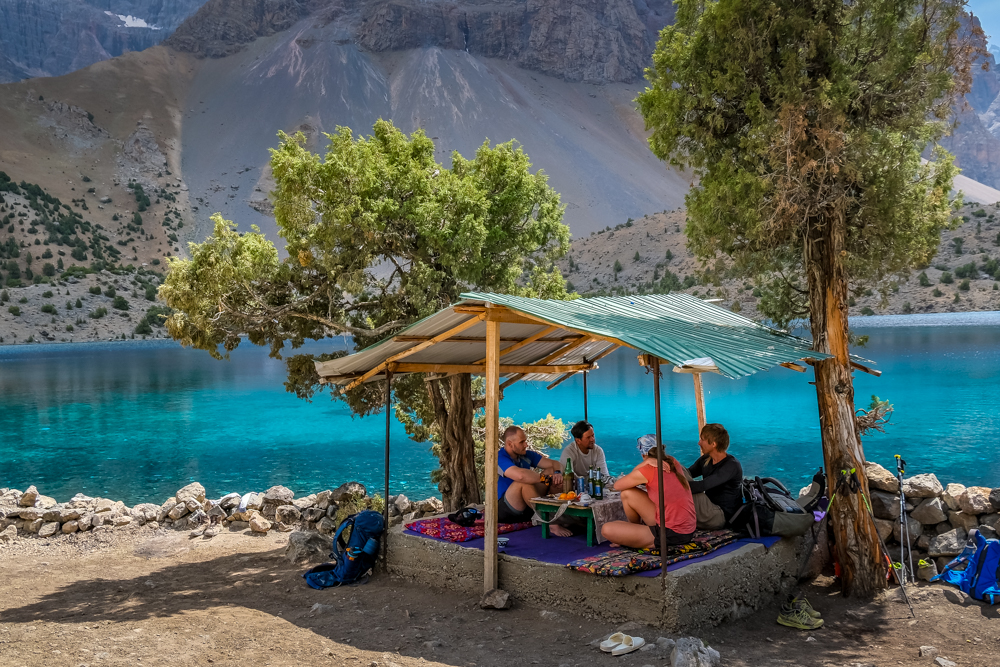
Again, on the final day of the trek, we responded to the same call and stopped off at a tiny, remote shepherd’s hut just a few kilometres from the end of the trek. Here, a small family etch out a simple existence growing potatoes and tending to a small flock of livestock. Their grandfather also drives a taxi in the capital Dushanbe to make ends meet.
Another source of income for them is to serve tea to the trickle of trekkers who lumber past their homestead. As the father threw out some rugs and cushions in front of his stone cottage, his wife brewed us some tea while the children brought plates of fresh bread, soured cream and sweets. Our porters served as translators while we sat in the sun and chatted with the family.
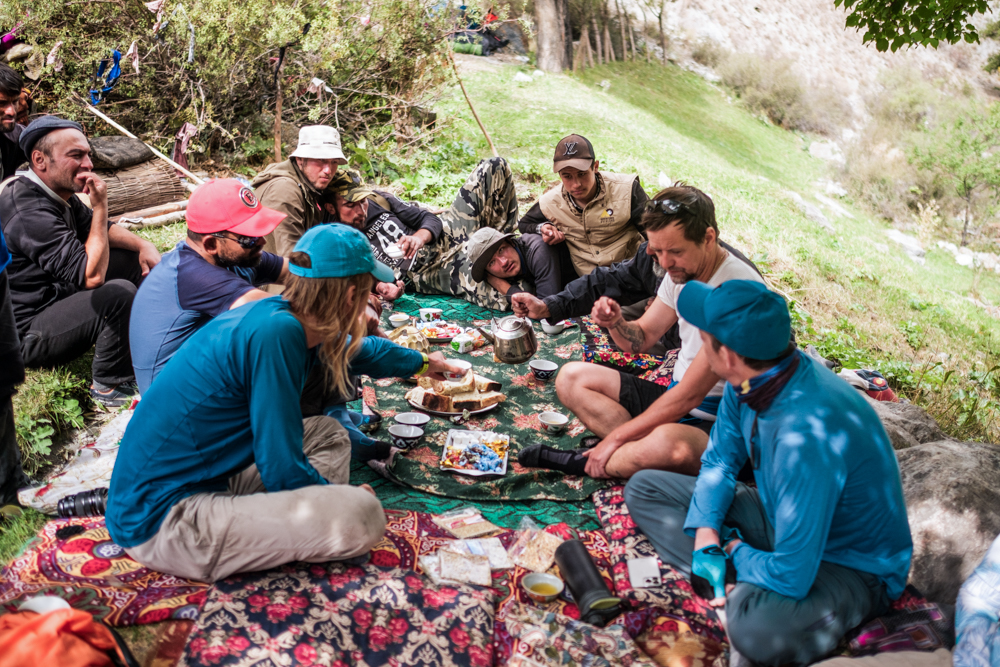
Tajikistan is one of Asia’s poorest countries with life in the remote mountains clearly challenging. Despite the hardships local communities face, throughout our trek, those we met were unfailingly generous and always made us feel welcome at the ‘roof of the world’.
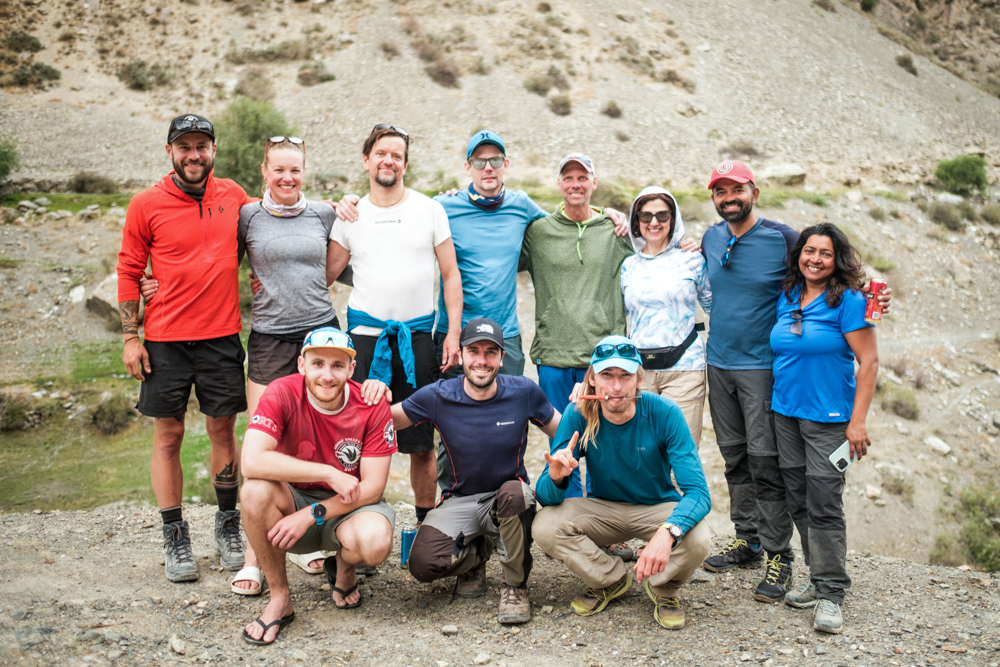
Trekking the Fann Mountains: our itinerary
Start/finish: Artuch Camp/access road near Gazza village
Distance: 61.5km
Duration: 9 days
Max. altitude: 4,750m (Chimtarga Pass)
| Day 1: Artuch Base Camp to Kulikalon Lakes |
| Distance: 7km Duration: 3-4 hours Elevation gain: 720m Camp altitude: 2,840m |
| Day 2: Kulikalon Lakes to Dushakha Lake |
| Distance: 6km Duration: 2 hours Elevation gain: 270m Camp altitude: 2,990m |
| Day 3: Dushakha Lake to Alaudin Lakes via Alaudin Pass |
| Distance: 8km Duration: 5-6 hours Elevation gain: 840m/-1,080m Camp altitude: 2,800m (via 3,860m) |
| Day 4: Alaudin Lakes to Mutnye Lakes |
| Distance: 7km Duration: 4-5 hours Elevation gain: 790m Camp altitude: 3,520m |
| Day 5: Mutnye Lakes to Chimtarga High Camp |
| Distance: 5km Duration: 3-4 hours Elevation gain: 850m Camp altitude: 4,115m |
| Day 6: rest day at Chimtarga High Camp |
| Distance: n/a Duration: n/a Elevation gain: n/a Camp altitude: 4,115m |
| Day 7: Chimtarga High Camp to Big Allo Lake via Chimtarga Pass |
| Distance: 11.5km Duration: 8-10 hours Elevation gain: 725m/-1,600m Camp altitude: 3,150m (via 4,750m) |
| Day 8: Big Allo Lake to Small Allo Lake |
| Distance: 11km Duration: 3-4 hours Elevation gain: -810m Camp altitude: 2,390m |
| Day 9: Small Allo Lake to access road near Gazza village |
| Distance: 6km Duration: 2-3 hours Elevation gain: -560m Camp altitude: n/a |
Trekking the Fann Mountains: the essentials
What: Trekking the Fann Mountains of Tajikistan.
Where: During the trek, all eight nights are camping. Campsites are usually on soft ground beside the lakes and reasonably mild and comfortable. The higher camps are rockier and colder so make sure you pack a thick, warm camping mat or mattress. I recommend the Therm-a-Rest Neoair sleeping pad.
Where possible, a toilet tent is erected with a simple hole dug inside but it’s often easier to do your business in the wild. Please do your utmost to leave no trace in the process. Always bury your waste in holes around 15-20cm (6-8in) deep and at least 70 paces from any water sources.
On either side of the trek, there is a night in Hotel Dilshoda in Samarkand as well as two nights in Komil Boutique Hotel in Bukhara followed by another night back in Samarkand. All are included in the price of the tour.
When: The 2024 trip is scheduled for 28 July to 11 August which coincides with the best time for trekking the Fann Mountains of Tajikistan. Generally, any time between June and September is a good time to visit Tajikistan for hiking, as the mountains should be snow-free.
How: I joined Epic Expeditions’ 15-day tour of Uzbekistan and Tajikistan. Epic Expeditions focuses on small-group expeditions through the mountains of Central and South Asia with an emphasis on wilderness, local communities and ‘Leave No Trace’ principles.
The tour starts at $2,950 USD and includes all transport, accommodation and all meals during the trek. It also visits the Silk Road cities of Samarkand and Bukhara. There is also the option to extend the tour by two days and visit the city of Khiva.
The tour begins in Samarkand in Uzbekistan and then enters Tajikistan overland via the Panjakent border crossing an hour from Samarkand. After nine days of trekking the Fann Mountains of Tajikistan, the tour returns to Samarkand before visiting Bukhara for two nights.
Equipment: Epic Expeditions will send you a detailed packing list well before your departure. It is possible to hire items such as a sleeping bag and tent but we recommend bringing your own. Make sure you have suitable hiking boots, cold-weather clothing and a water filter system as well as your favourite snacks.
Editor’s picks
For this trek, we recommend the following kit.
- Walking boots: Lowa Renegade GTX
- Backpack: Osprey Aether 65
- Tent: MSR FreeLite 3
- Sleeping bag: Rab Neutrino Pro 700
- Sleeping pad: Therm-a-Rest NeoAir XLite
- Water filter: Grayl GeoPress Water Filter or Platypus QuickDraw Microfilter System
- Trekking poles: Leki Khumbu Lite
- Sim card: Holafly eSIM for Tajikistan
- Insurance: TrueTraveller – you’ll need the Extreme Adventure Pack for trekking in the Fann Mountains.
Porters: Generally, trekkers should expect to carry most of their own gear. Mules (and porters for the higher camps which mules can’t access) are used to carry the team’s food and cooking gear. For an additional cost, extra mules (and, later, porters) can be hired to help with personal gear.
Visas: If you’re joining this tour may need to organise a double-entry e-visa which costs $35 USD although travellers from several countries, including the UK, are exempt. Most travellers will need to apply for an e-visa to enter Tajikistan which costs $30 USD.
Access: I flew to Samarkand in Uzbekistan from London via Istanbul with Turkish Airways. Book via Skyscanner for the best prices.
Sim card: We recommend getting a Holafly eSIM for Tajikistan so you can stay connected to the internet on your trip. We can offer our readers 5% off all Holafly purchases. Simply use the code ATLASANDBOOTS at checkout.
Enjoyed this post? pin it for later…
